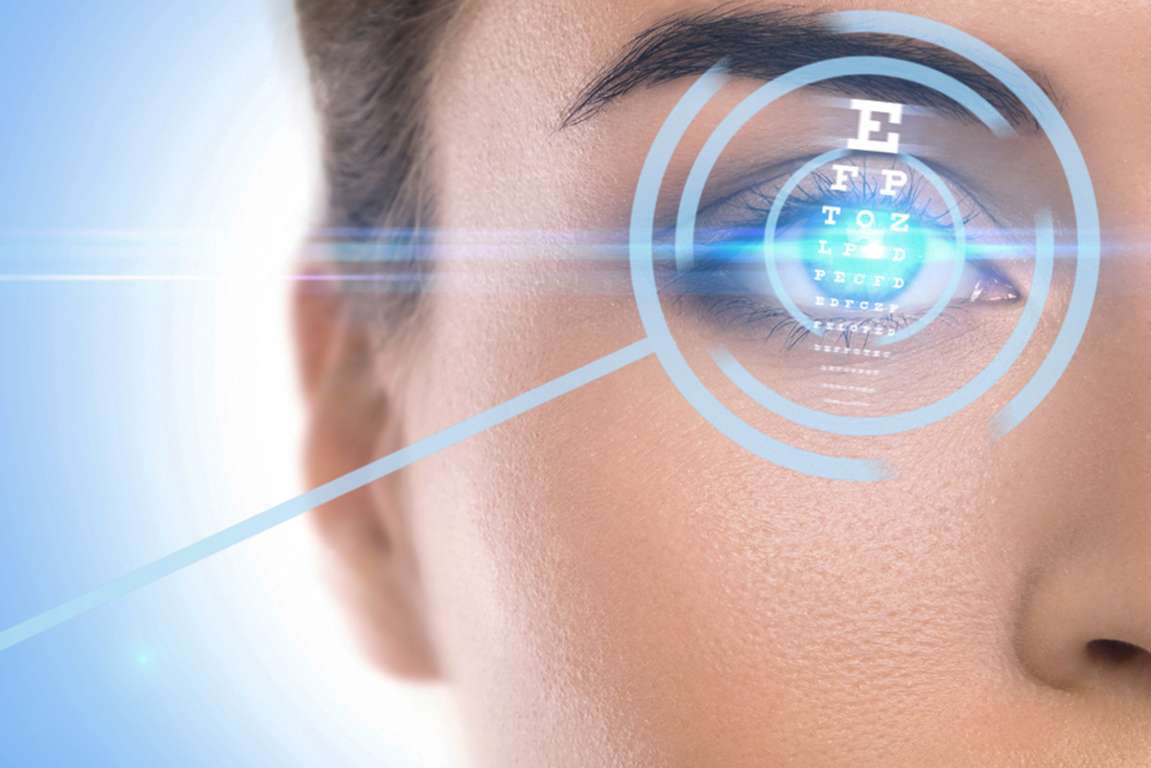
LASIK procedure is a safest, shortest and painless procedure that reshapes the cornea and eliminates the requirement for glasses and contacts lenses to correct farsightedness, nearsightedness and astigmatism.
When it comes to laser vision correction, Hashmanis is the very name recognized and trusted by millions of patients from around the world. Our state-of-the-art equipments and laser vision correction facilities are specially designed to form your procedure efficient, safe and comfortable. Every procedure is performed in an exceedingly clean, sterile environment. Our knowledgeable, friendly consultants are always available throughout your journey with us to answer questions, offer support, and explain the procedure
LASIK vision correction is an excellent alternative to eye wears and lenses. It reduces your dependence on glasses and contacts while it helps you regain an active lifestyle. With proven results Laser vision correction is quick and painless yet safe and effective.
Wavefront LASIK
Hashmanis is the only hospital in Pakistan that performs the foremost advanced Wavefront LASIK surgery. The eye surgeon can calculate the aberrations in your cornea’s shape and texture with the help of wavefront device, and customise the lasers to treat all these aspects of your cornea for more accurate results.
Topography guided LASIK
Topography-guided LASIK is an advanced treatment available at Hashmanis for myopia and astigmatism patients. The procedure customizes the laser treatment according to the unique surface shape of your eye. Topography-guided LASIK includes wavefront optimization, specifically designed to improve the final shape of the surface of the cornea to prevent side effects like glare and halos at night.
FEMTO LASIK
Femto LASIK is one of the most advanced and efficient bladeless laser eye treatment technology introduce by Hashmanis in Pakistan. With the help of this procedure the surgeon can easily correct refractive errors between -12 and +6 D. The main difference between standard LASIK and Femto-LASIK is the corneal flap preparation.
Photo Refractive keratectomy – PRK is also a laser refractive surgery that reshapes your cornea to correct nearsightedness also known as myopia, farsightedness also known as hyperopia and astigmatism.
Standard PRK
After the removal of the surface layer of the cornea, the surgeon uses an advanced excimer laser to reshape the cornea by removing a pre-determined amount of corneal tissue. During the pre-operative assessment, the amount of tissue to be removed is determined. These measurements are typically in aligned with your glasses or contact lenses recent prescription.
Topography-Guided PRK
Topography-guided PRK combined with corneal collagen cross-linking (CXL) is an innovative new treatment for keratoconus. It is an advanced laser procedure which helps in improving the visual function in selected Keratoconus patients.
Cataract is a progressive eye condition that effects your vision to become blurry. This is due to the faulty lens in your eye where a white cloud gradually gets collected causing the patient to have difficulty in vision loss.
Phacoemulsification
The most common technique used for removal of cataract is through Phacoemulsification also known as ‘Phaco’. This surgery takes less than half hour to remove cataract through minimal sedation i.e. local anesthesia (injecting anesthesia around the eye) or by topical anesthesia (applying numbing drops into the patient’s eye).
Extracapsular Cataract Surgery
Extracapsular Cataract Surgery (ECCE) is an advanced level of Cataract surgery. This surgery in only opted when the patient’s case is more complicated, the patient’s cataract is too hard that the cataract cannot be removed by Phacoemulsification surgery.
FLACS
An advanced non-invasive technique developed to help remove the cataract is known as Femtosecond Laser Assisted Cataract Surgery (FLACS). This procedure is a computer-guided laser machine, which with the aid of laser not only breaks the faulty lens to fragmentation but also removes it and replaces it with an artificial lens Intraocular Lens Implant (IOL).
Types of Lens
With time, many types of variations have developed in artificial lens. These lenses were specifically designed to replace a patient’s faulty lens to the artificial lens known as ‘Intraocular Lens Implant (IOL) in many cornea related surgeries.
PresbyVision is an all-in-one vision correction solution that is specially designed to treat patients with not just only presbyopia, but also other refractive errors, such as myopia, hyperopia and astigmatism.
Lens PresbyVision
Lens PresbyVision is an all-in-one procedure designed to help patients treat their presbyopia so they can enjoy a clear vision. Lens PresbyVision is slightly different from standard LASIK as no excimer laser is used to correct your vision. Instead, a surgeon will replace the natural lens of your eye with an artificial lens known as trifocal lens or extended depth of focus – EDOF lens. In the past, bifocal lenses were used to correct near to far distances.
Laser PresbyVision
Just like standard LASIK surgery, the Laser PresbyVision is a vision correction surgery designed to treat up-close reading vision loss using state-of-the-art laser technology. With Laser PresbyVision, also known as PresbyLASIK, the dominant eye will be corrected (the better-functioning eye) to see from far distances and the other eye to see from near distances.
LASEK
Laser Epithelial Keratomileusis – LASEK is a variation of both the PRK and LASIK laser eye surgeries. The surgeon loosened the the outer layer of the cornea known as the epithelium with an alcohol solution during the procedure.
Refractive Lens Exchange - RLE
For improved and better results, more people are choosing refractive lens exchange – RLE procedure now a days. Since the introduction of intraocular lenses – IOL, over 50 million IOL lenses have been implanted in patients around the world.
Implantable Collamer Lens - ICL
Do you wear glasses or contact lenses to help you see objects that are in the distance? You are nearsighted (a condition called myopia). This is a type of focusing error that results in blurry distance vision and can be corrected with glasses, contact lenses or eye surgery.
